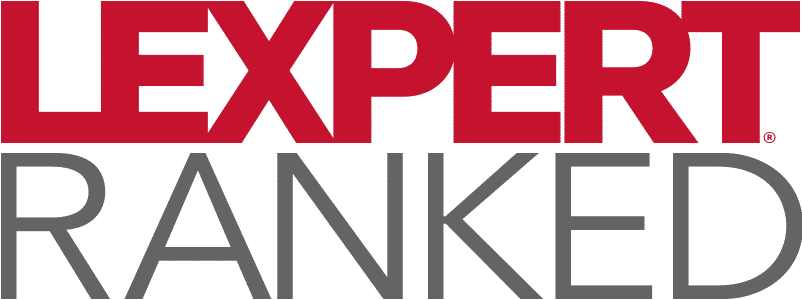
 Best Professional liability lawyers in Canada as ranked by Lexpert
Best Professional liability lawyers in Canada as ranked by Lexpert The practice area of professional liability lawyers is generally understood to comprise the provision of advice and representation in civil proceedings alleging damages resulting from the negligent provision of professional services. The scope of this section encompasses all manner of professionals, including lawyers, notaries, insurance agents and brokers, real estate professionals, accountants, architects and engineers, directors and officers, actuaries, and stockbrokers.
Please note that this practice area does not pertain to MEDICAL NEGLIGENCE matters, which are dealt with elsewhere. However, regulatory matters involving doctors, nurses and other medical professionals may arise in this practice area.
Please note that the Lexpert directory has separate practice areas for:
Professional liability attaches to a person who, while rendering professional services for another person, has caused damage or injury to that said person. This includes deliberate acts which may show signs of malice and criminal intent; negligent acts or torts of negligence when the professional has not exercised the standard of care expected of him/her; and even omissions such as when the professional refused or has not acted in a timely manner.
Working for the alleged negligent professionals as the defendant, or for the injured client as the plaintiff, encompasses the work of professional liability lawyers. As a counsel for the plaintiff, the professional liability lawyers have the expertise of establishing convincing evidence in support of the four elements of negligence to hold the defendant liable for damages in favor of the plaintiff.
On the other hand, as a counsel for the defendant, professional liability lawyers would in turn ensure that the elements of negligence have not been sufficient, or to set up defences that would negate the professional liability, such as the exercise of due diligence during the alleged negligent act, professional liability limits, or that there has been contributory negligence on the part of the plaintiff to at least minimise the liability of the defendant.
As a preventive measure, professional liability lawyers may also work with their clients in accessing professional liability insurance plans to protect them should they find themselves on the verge of being charged with a case for damages due to negligence. In addition, professional liability lawyers may also resort to any of the different methods of alternative dispute resolution to resolve an issue between the professional and the injured party to prevent a litigation from happening between the two.
Under their respective ethical codes or codes of practice, a professional may also be charged with administrative sanction arising from the same alleged negligent act of a different civil case. In this regard, professional liability lawyers are also knowledgeable on ways to defend clients against such administrative cases.
Since there is no single federal statute governing torts or negligence, it is mostly governed by common law, provisions of other federal laws, and provincial and territorial laws; except for Quebec, whose tort law may be sourced out from its Civil Code. Hence, Canadian laws on tort of negligence may differ from each provincial or territorial jurisdiction.
Generally, a tort is a civil wrong attributable to the wrongful acts by a person – called tortfeasor – that causes harm or damage to another person – called injured party – which the tortfeasor may be held legally responsible through the institution or filing of a civil case for damages.
In Canada, the type of damage which can be recovered by the injured party from the tortfeasor, when awarded by the court, may be divided into two categories: (1) compensatory damages, and (2) non-compensatory damages.
Compensatory Damages: This can be divided into General Damages or Special Damages, where the former is the non-monetary damages suffered by the injured party, and the latter compensates the injured party for their actual financial damages;
Non-Compensatory Damages: This is also non-monetary compensations, and may be divided into:
Punitive Damages when courts want to punish tortfeasors when their acts have been gravely shocking to the conscience of people;
Aggravated Damages when courts want to compensate the injured party due to the intense mental and social stress they have suffered, and;
Nominal Damages when courts would still want to award minimal awards even if there is only slight inconvenience suffered by the injured party or that they have not proven any substantial loss.
Intentional torts are contemplated and deliberate acts of the tortfeasors against the injured party. Normally, this type of tort arises from criminal acts as defined in Canada’s Criminal Code, and a civil action may be instituted to recover damages as a result of this criminal act. These may also arise not just when there’s physical or mental damage, but also from acts which causes damage to another’s property.
Some examples of criminal acts which may give rise to intentional torts are physical assault, false imprisonment, sexual harassment, defamation, among others. The provisions of Criminal Code under Sections 219-221 also provide for the specific crimes on criminal negligence.
Unintentional torts, which may also be referred to as tort of negligence, are wrongful acts resulting from the negligence or carelessness of a tortfeasor, thus causing unintentional damage to the injured party. This is based on the principle that every person is obliged by law to exercise due diligence and caution in the exercise of their rights, in the performance of their duties, or basically in everything they do. As such, this “due diligence” expected of every person is measured through the eyes of a “reasonable person” and is tested in a case-to-case basis.
There are four elements that the plaintiff must prove to establish negligence in Canada (except for Quebec, where negligent acts must be referred to its Civil Code). These elements can be applied whether the negligent act occurred in the exercise of the tortfeasor’s professional duties, or when persons acted in their private capacity.
There must be a presence of duty between the tortfeasor and the injured party, such as the duty of the former to ensure the safety of the latter. This duty need not be in a written contract and may also arise from an implied or unwritten contract.
When the duty between the two parties has been established, there should be proof that it was breached by the tortfeasor. Here, negligence on the part of the tortfeasor can be alleged to be the reason why such breach occurred.
The injured party then must establish that there is reasonable causation – or connection – between the injuries he/she has sustained and the breach of duty by the tortfeasor. Here, the “but for” rule is usually applied. The rule states that the plaintiff must establish that there would not have been any injury but for the tortfeasor’s breach of duty.
Lastly, the injured party must present evidence of the damages that he/she has suffered, which should be reducible to a monetary value.
Want to more about negligence, torts, or professional liability? Scroll down to see the best professional liability lawyers in Canada as ranked by Lexpert.







